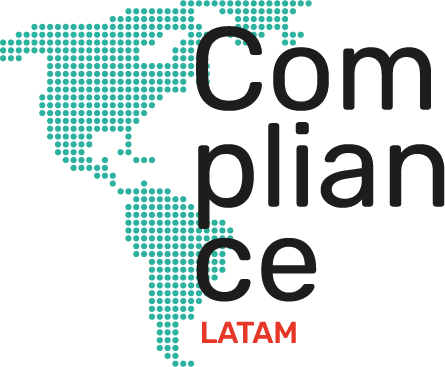
12-12-2024 | media-en, Noticias-en
Third episode of the az t Podcast of “ Rule The Rules ”, a space where the Director of the az Compliance Group, Yoab Bitran , spoke with Luz María Zea, an international compliance expert.
Luz María shared her experience in compliance and key recommendations for managing it.

11-12-2024 | Noticias-en
In Colombia, the protection of labor rights in Colombia is fundamental, discrimination in the workplace is a serious concern for both employers and employees. In this context, it is essential to understand the laws and regulations that govern the prevention and addressing of discrimination in the workplace.
Labor discrimination from colonial times to the present day
Labor discrimination in Colombia has been a deep-rooted reality throughout its history, from colonial times to the present day. During the colonial period, indigenous people were subjected to encomienda and forced labor, while Afro-descendants were enslaved.
In the 19th century, women were limited to the domestic sphere, and migrants faced discrimination based on their national origin. Although significant legal progress has been made, such as the 1991 Constitution and Law 1482 of 2011, which prohibit and penalize labor discrimination, significant challenges persist in the 21st century. Women, Afro-descendants, indigenous people, LGBT+ people, and older adults continue to face barriers in accessing formal employment and better working conditions.
This shows that despite government and civil society efforts to combat discrimination, there is still a need to strengthen the application of labor law in Colombia, combat stereotypes and social prejudices, and guarantee equal opportunities for all population groups.
Legal regulations in Colombia
The Colombian Ministry of Labor has reinforced its commitment to equality and the protection of the right to work through the issuance of Circular 0062 of October 7, 2021. This circular reiterates the prohibition of any act of exclusion in the selection processes to perform a job in the private sector.
Likewise, the Colombian Political Constitution, in its article 13, establishes special protection for those people who find themselves in circumstances of manifest weakness, whether due to their economic, physical or mental condition.
On the other hand, Article 53 of the Constitution guarantees principles such as equal opportunities and the non-waivability of minimum benefits established in labour regulations. These principles are essential to ensure fair and equitable treatment in the workplace.
The position of the Ministry of Labour
The Minister of Labour, through his representatives, has strongly expressed his rejection of any type of discrimination against workers and job applicants. He emphasizes that displays of exclusion or work obstacles will not be tolerated, especially towards people with disabilities.
Furthermore, the Ministry urges employers to comply with legal and jurisprudential guidelines that regulate the selection of personnel. This includes applying the principles of good faith, reasonableness and proportionality in decisions related to the selection or exclusion of a person for a specific position.
Protection of workers’ rights
It is the employer’s responsibility to ensure that the right to privacy and health of its employees or job applicants is protected. It is also crucial that the criteria for selecting employees is based on the skills and aptitudes required for the specific job, avoiding any type of discriminatory practice that affects the rights of job applicants.
Consequences of labor discrimination
The Ministry of Labor warns that employers who carry out discriminatory practices in the selection, admission and permanence processes of workers will be subject to investigations and sanctions for violation of labor rights.
It is important to understand that workplace discrimination not only affects the individuals directly involved, but can also have a negative impact on productivity and the overall work environment.
Tips for employers and employees
To prevent and address workplace discrimination in Colombia, both employers and employees can take the following steps:
- Know the law: It is essential to be informed about the laws and regulations that protect against discrimination at work.
- Promote equality: Employers should create clear policies and procedures that promote equal opportunity and fair treatment in the workplace.
- Training: Provide regular training to employees and managers on the importance of diversity, inclusion and discrimination prevention.
- Reporting Channel: Establish a confidential reporting system so that employees can safely report any incidents of discrimination.
- Impartial Investigation: Take all complaints of discrimination seriously and conduct impartial and thorough investigations.
- Raise awareness: Organize activities and events that promote awareness of diversity and inclusion in the workplace.
- Victim Support: Provide support and resources to employees who have been victims of discrimination, including access to legal counsel if necessary.
For employees, it is important to know their rights and not be afraid to speak up about any form of discrimination they experience in the workplace. Working together, employers and employees, is essential to creating a safe, inclusive and respectful work environment for all.
In conclusion, preventing and addressing discrimination as part of labor law in Colombia is the responsibility of all actors in the labor market. By complying with the laws and promoting equal opportunities, we can create a more fair and equitable work environment for all Colombians.

10-12-2024 | Noticias-en, Opinions
Over the past decade, we have witnessed significant transformations in the legal field, where the inclusion of new generations has proven to be a key factor in energizing organizations. As a young lawyer with a solid track record in the energy sector, especially in hydrocarbons, oil and petrochemicals, and with recent experience as a legal and compliance director, I have been able to observe closely how our active participation is transforming the way companies face legal and regulatory challenges.
Generational change is not limited to a mere change of leadership; it represents a valuable opportunity to challenge paradigms and bring fresh perspectives. As young lawyers, we have the ability to adapt quickly to new technologies and social demands. However, in order for our potential to materialize, it is essential that we are given the confidence and support necessary to grow and assume leadership roles.
The growing importance of compliance in the business world is an area where our generation can make a difference. With a focus on ethics and integrity as fundamental pillars, young lawyers can help organizations build robust and resilient compliance cultures. This is not just about complying with regulations, but about fostering an environment in which transparency and accountability are the norm, thus contributing to the sustainability and reputation of companies.
In my experience, investing in young talent has been crucial to addressing complex challenges. We are often able to see innovative solutions from different angles. In the context of compliance, this translates into the implementation of technological tools and agile methodologies that facilitate risk monitoring and regulatory compliance. Our generation’s familiarity with digitalization and data analysis allows us to proactively address the challenges that organizations face in this field.
However, it is also important to recognize and value the role of experienced lawyers, who bring their wisdom and accumulated knowledge to the teams. This balance between the energy of our generation and the experience of more established professionals enriches our organizations and fosters an environment of mutual learning. Together, we can build compliance strategies that not only adhere to regulations, but are also an integral part of the organizational culture.
I have witnessed how, with the right support, new professionals can achieve exceptional goals. This process requires a collective commitment to create environments conducive to our professional growth, based on trust, meritocracy and inclusion. Promoting a collaborative approach to compliance, where voices from all levels are heard, can lead to early identification of risks and the creation of effective solutions tailored to the needs of the organization.
The path is not easy, and the challenges we face as young lawyers are significant. However, our motivation and desire to excel are engines that can drive positive changes in the industry and in the companies where we work. Fostering inclusive leadership that gives voice to our generation is essential to building a more dynamic and competitive future, while learning from those who have walked this path before us.
Trust is fundamental to the success of any organization. Giving space to new professionals not only boosts our personal growth, but also enriches companies. My experience has taught me that leadership is not just a matter of experience, but also of vision and adaptability to a constantly evolving environment.
It is time for more organizations to recognize the value of promoting this generational change. By trusting the new generations and valuing experienced professionals, we are building a solid present and a promising future. Furthermore, by integrating this new perspective into the field of compliance, it is possible to ensure not only legal compliance, but also an ethical commitment that boosts the reputation and sustainability of companies in the long term.
By Daniel Cheang, Chief Legal and Compliance Officer at Energas | Compliance Latam Collaborator

10-12-2024 | Noticias-en
Recently, the Executive Branch instructed the creation of the National Energy Efficiency Labeling Program (the program) and established the application of minimum energy performance standards on selected products.
The programme will aim to establish concrete actions for the actors involved in the regulation and supervision of product labelling. To achieve this, a clear and detailed roadmap will be developed that includes:
- Clear implementation deadlines.
- Progressive incorporation of minimum energy performance standards, known as Minimum Energy Performance Standards (MEPS)
- Achievable goals and periodic evaluation mechanisms to measure their impact and effectiveness.
Scope
The program will cover household electrical appliances, as defined in the “table of household appliance consumption” published by the National Electricity Administration (ANDE). This will allow prioritizing those products that have the greatest impact on the country’s energy consumption.
Implementation
The National Committee on Energy Efficiency (the committee) must identify the electrical appliances for domestic use with the highest consumption and coordinate with the competent institutions the preparation, development and implementation of the necessary technical regulations, within a maximum period of two years from its selection.
In the first stage of the program implementation, the committee will select three household electrical appliances with the highest consumption.
Specific objective
The information contained in the energy efficiency labels of household appliances manufactured, imported and marketed in the country must comply with the corresponding Paraguayan technical standards. In addition, the selected products to be required from the second year of their mandatory implementation in the local market must contemplate the application of the minimum energy performance standards or MEPS.
Responsibility and execution
The office of the Vice Ministry of Mines and Energy, which is part of the Ministry of Public Works and Communications, will be responsible for implementing and monitoring the program. In addition, the development of conformity assessment bodies will be encouraged to advance the process of product certification.
The program not only seeks to reduce energy costs in homes and businesses, but also to strengthen the country’s competitiveness and contribute to the sustainable development of its economic activities. This initiative positions Paraguay as a benchmark in the adoption of responsible and sustainable measures in energy matters.

10-12-2024 | Noticias-en
It was the first annual event of Compliance Latam, the most important compliance-oriented community on the continent.
December 2024 – Compliance Latam ( www.compliancelatam.legal ), the first platform dedicated to the regulatory compliance ecosystem in Latin America, held the “Compliance Latam Forum 2024” on December 4 in Montevideo, Uruguay, its first annual event that brought together legal industry leaders, regulatory experts and business ethics professionals.
The event was attended by prominent panelists from companies and law firms from Argentina, Brazil, Chile, Colombia, Costa Rica, Ecuador, the United States, Paraguay and Uruguay.
The Compliance Latam Forum 2024 was developed as a discussion divided into 3 panels:
- The first panel, ‘Transforming Compliance: Innovation and Best Practices’, featured experts who shared their vision on how technological innovations and best practices can redefine regulatory compliance. From the use of technology, through the implementation of effective tools to the creation of ethical organizational cultures, success stories and effective strategies.
- The second, ‘Internal Investigations: Transforming Challenges into Opportunities’, sought to develop the idea that internal investigations are an opportunity to strengthen the compliance culture. Industry leaders shared innovative approaches and practical experiences from the receipt of a complaint to the final resolution and discussed how to turn challenges into valuable learning and implement best practices.
- Lastly, and third, ‘ FCPA and the effects of its application in the countries of the region ‘, a segment that addressed the extraterritorial effect of FCPA (Foreign Corrupt Practices Act) and the scope of its application in companies in the region, which is crucial in order to avoid sanctions from US control bodies. It brought together professionals in the field and industry leaders who offered their knowledge, experiences and best practices.
“Throughout the Forum we explored crucial topics related to best practices in compliance, technological advances in the sector and experiences that are shaping the future of the industry. This event was an invaluable opportunity to share perspectives, learn about the latest innovations and strengthen the collaboration network that is so fundamental to the development of compliance in the region,” said Rodrigo Albagli, partner at az de Chile, one of the law firms that created the platform.
“We wanted this Forum to be not only a space for learning, but also for integration, where all of us who share the commitment to ethics, transparency and regulatory compliance, contribute to building a stronger, more responsible region that is better prepared for the challenges of the future,” said Agustín Mayer, partner at Ferrere de Uruguay, another of the law firms that is a member of Compliance Latam and host of the event.
Jeffrey Lehtman, Partner at the US-based law firm Miller & Chevalier, said that “at Compliance Latam, we remain committed to promoting best practices in compliance and creating a more united community prepared for future challenges. It has been a very valuable event that has allowed us to share experiences that will help us continue to strengthen our practices and stay at the forefront.”
Compliance Latam, which is made up of the firms Albagli-Zaliasnik (Chile), Basham, Ringe y Correa (Mexico), Beccar Varela (Argentina), BLP (Central America), Bustamante Fabara (Ecuador), CPB (Peru), Ferrere (Uruguay, Paraguay and Bolivia), Lefosse (Brazil), Miller & Chevalier (United States) and Posse Herrera Ruiz (Colombia), is presented as a meeting place where different actors in the legal field can find relevant information to face the challenge imposed by current regulatory frameworks, actively promoting best compliance practices in both the private and public world.
The platform features the participation of leading specialists and international experts on topics such as ESG, anti-corruption models, free competition, data protection and privacy, consumer protection, corporate and labor compliance, regulatory compliance, tax compliance, corporate governance, corporate culture, codes of ethics, and human rights.

09-12-2024 | Noticias-en
On November 20, 2024, the deputies of the Congress of Guatemala approved Decree 32-2024, the “Competition Law”, as a matter of National Urgency. This approval marks a significant milestone for the country, seeking to promote a competitive market, attract foreign investment, and promote national economic growth.
This new regulation aims to prevent anti-competitive and monopolistic practices or those that tend to limit market access for small or new Economic Agents (traders, companies and corporations). All of this under the supervision of a new regulatory body, called the Superintendency of Competition, which will be an autonomous and decentralized entity.
This law provides that the Superintendency of Competition may act ex officio or as a result of a complaint from a private individual, in which case the Economic Agent is obliged to provide all possible information to determine whether or not an anti-competitive practice is being implemented, through an administrative process, prioritizing the right to defense and the principle of innocence. In this sense, it establishes infractions, prohibitions and provides coercion to the entity in charge of monitoring compliance with sanctions when anti-competitive practices are determined in the Guatemalan market. They may be sanctioned up to a maximum of two hundred thousand current minimum wages. For this purpose, it is noted that individuals or legal entities, national or foreign, will be subject to this law.
As a consequence of its approval, the Monopoly Crime is repealed, with only economic sanctions, and articles of the Commercial Code, the Consumer and User Protection Law and the State Contracting Law are modified. Likewise, it establishes the supplementary application of the Competition Law with respect to Economic Agents that are governed by their own sectoral laws that contain competition rules and that have regulatory authority, with these prevailing over the Competition Law. Which will surely give room for interpretation in each case.
Finally, the entry into force of this Law has been defined in two stages, the first starting in January 2025 and the next two years after its publication.
It should be mentioned that this still needs to be sanctioned by the President of the Republic of Guatemala and then promulgated and published, in accordance with the legislative process.
For more information, contact us at info@blplegal.com





